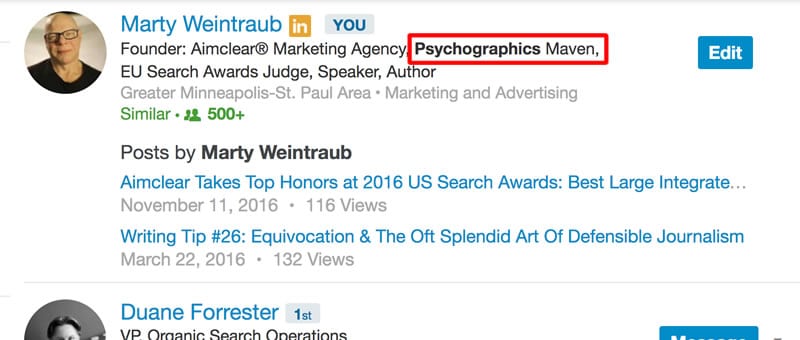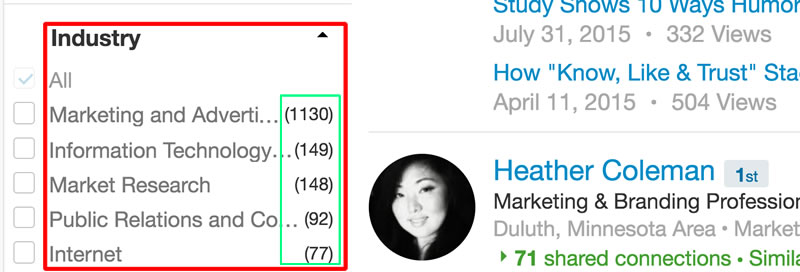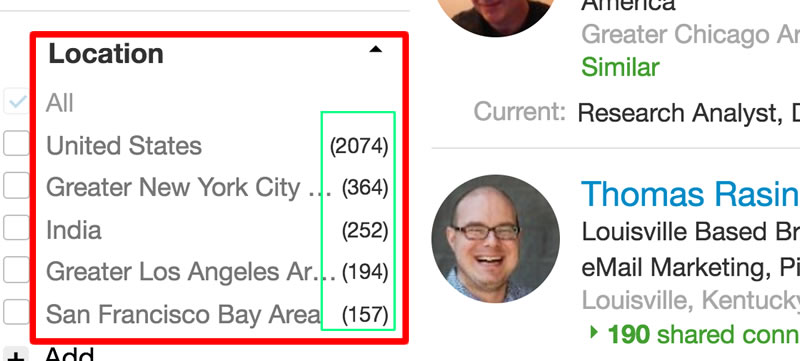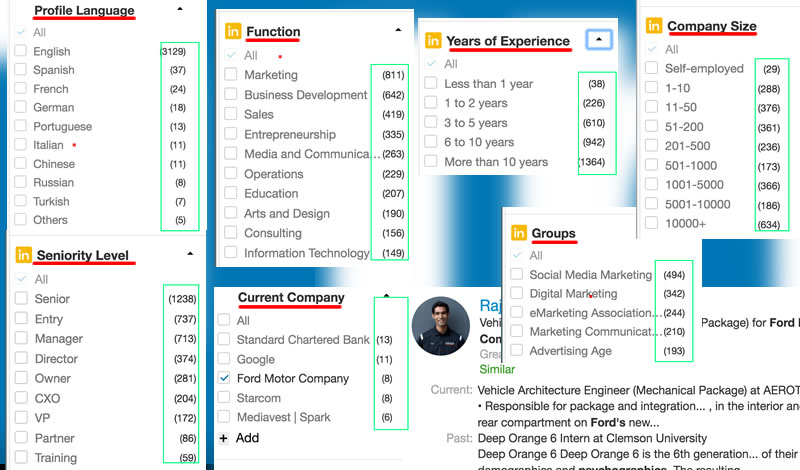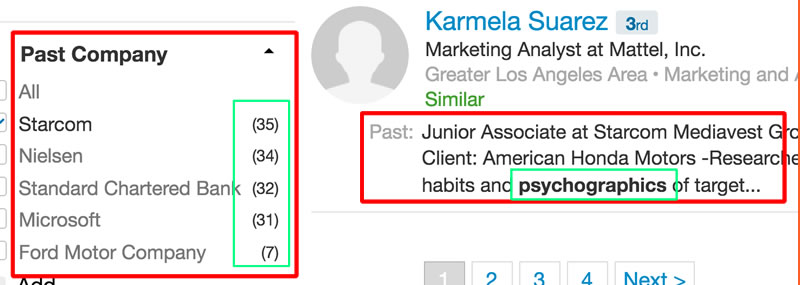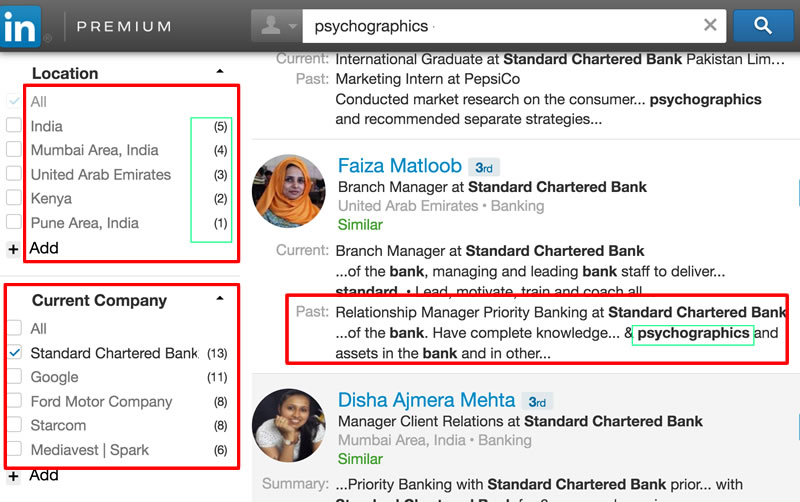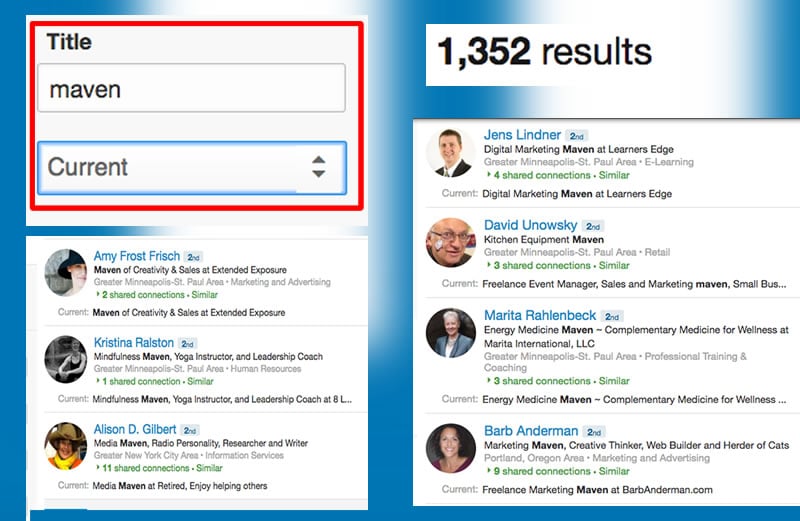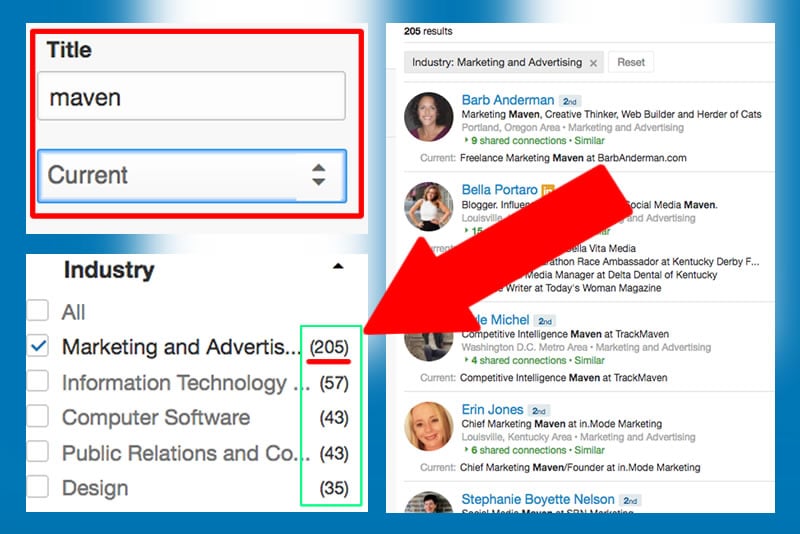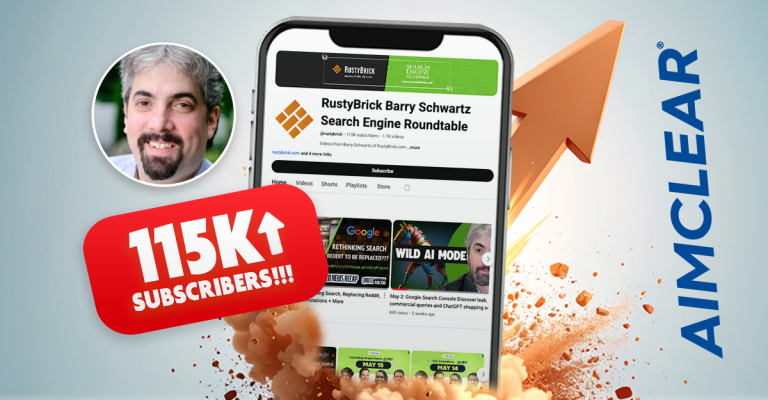Psychographic variables are attributes connecting users’ interests, affinities, proclivities, politics, biases, religion, peccadilloes, sexuality, financial status, purchase intent, education, freaky stuff, car ownership, house size and thousands of other common (plus off-the-beaten-path) layers. Some intellectuals also refer to them as IAO (interests, activities and opinions) variables.
Occupational psychographics profile a user’s workplace, employers, job description and other variables. Trade show affinities, certifications, group memberships and profile summaries are also great examples of job-related targeting data. LinkedIn social profiles, filled out by users, make occupational psychographics discoverable via LinkedIn’s internal search engine. In addition, a little hunting reveals Easter eggs nested in search filters, both stock and advanced (paid accounts).
As psychographic targeting continues to mash with search by curated cookie pools/RLSA and filtered retargeting, more professionals define themselves with the word “Psychographics” in their LinkedIn profiles.
Using LinkedIn’s internal Advanced Search, we profiled psychographic segmentation of LI users who include the word “Psychographics” in their LI profiles. Results are interesting, especially for marketers. We marketers comprise the bulk of professionals including “Psychographics” in their professional identity.
AIMCLEAR‘s been into psychographics for years and, as such, I truly consider study thereof a key element of my professional identity. That said, I’m a LinkedIn anomaly. Not many LinkedIn users include psychographic or psychographics in their job title.
Most often, psychographic tendencies are expressed in users’ LinkedIn profile summaries.
LinkedIn’s search engine provides a little-discussed and powerful industrial research tool to research users, nested in search filters. Run a search then open any unused filter. You’ll see data as to how LinkedIn user-volume breaks out for this SERP in the filter. That’s so cool! For instance, the next image reveals most LinkedIn users claiming psychographic identify work in marketing and advertising industries. Of course they do. Facebook, Twitter, LinkedIn, DMPs and Google audiences including YouTube are fertile mainstream audience-targeting playgrounds.
Now let’s apply our technique to really flesh out LinkedIn users’ psychographic identity. Essentially, we’re talking about the occupational psychographics of psychographic job descriptions, a pretty meta deal. We’ll look at the Location variable next.
Take a minute at additional LinkedIn search filters: Profile Language, Function, Years of Experience, Company Size, Seniority Level, Current Company and Groups. Use LinkedIn Advanced SERPs to profile users along any available occupational variables.
Turns out car companies and banks undertake psychographic customer profiling.
Of all companies, Starcom bleeds psychographic-savvy employees most according to LinkedIn data.
Get busy mashing data for additional insights via multiple layers. It’s easy to see where NYU alumni place in professional gigs using psychographics
Apparently Standard Chartered Bank can profile customers, from Mumbai to UAE. It’s easy to mashup layered attributes for deeper insights.
Using LinkedIn’s Advanced Search, we studied psychographic segmentation of LinkedIn users who offered the word “Psychographics” in their profiles. Results are enlightening, certainly for marketers. We marketers represent the majority of professionals tendering “Psychographics” to describe our jobs. Use this technique to research LinkedIn users in psychographic layers.
As an aside, I also have the word “Maven” in my job title. SO, we checked maven just for fun. There were 1,252 results.
It’s fun to note that Marketing and Advertising wins again! More mavens are marketers! Go figure.

